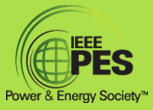|
|
A List of
PES-Related Emerging Technologies
| The following list is
intended as a starting point for an evolving document that would track
new developments related to emerging technologies of an interest
to PES. For more details, please click on the links listed below. |
| |
|
Electric Machinery
|
|
Energy Development &
Power Generation
|
|
Insulated
Conductors
|
|
Power
System Analysis,
Computing and Economics
|
|
Power
System
Communications
|
|
Power
System Relaying
|
|
Energy Storage
|
|
Smart Grids
|
|
Substations
|
|
Switchgear
|
|
Transformers
|
|
Transmission
&
Distribution
|
|
Power
Systems
Instrumentation and Measurement
|
| Other Technologies | | |
| Updates and Contributions |
| Any constructive comments, suggestions, and contributions are welcome. If you
would like to contribute to the ETCC work by submitting an update on
the technologies listed above, or a list of Emerging Technologies that you consider relevant to the technical fields covered by IEEE Power and Energy Society, please include in your write-up the following items: - List of Emerging Technologies
- Brief Technology Descriptions
- Technology Applications
- Technology Benefits
- Challenges, Barriers, Gaps
- Status – Trends, Installations
- Standards Work
- Potential Impact on Power Engineering
- References
and send them by e-mail to branislav@ieee.org. Any relevant submission will be appreciated and reviewed by the ETCC/ ETCC TAWG for possible inclusion and publication in the future ETCC Technology Assessment reports. |
| | For more information on the technical fields covered by the IEEE Power and Energy Society, please check the IEEE PES Technical Activites web page by clicking here. |
| In submitting contributions to ETCC, it is important to make a distinction between technology and its application.
Technology
can be broadly defined as "the application of scientific knowledge to
the practical aims of human life" [1], especially to industrial or
commercial objectives. "Technology" can refer to material objects of
use to humanity, such as machines, hardware or utensils, but can also
encompass broader themes, including systems, methods of organization,
and techniques [2].
Example 1: Synchrophasor measurement technology.
Hardware and methods for calculating phasors from time-stamped signal samples.
Example 2: Sensor technology.
Devices and methods for measuring physical quantities such as current, voltage, temperature, speed, vibration, etc.
Technology application can be defined as an act of putting a technology to use, and a use to which a technology is put [3].
Example 1: Fault location
Use of synchrophasor measurement technology to locate faults in power systems.
Example 2: Thermal protection of transformers
Use of temperature sensor technology to determine critical temperatures of transformers.
[1] Encyclopedia Britannica. Retrieved on 2008-07-28.
[2] Wikipedia. Retrieved on 2008-07-28.
[3] Merriam-Webster's Online Dictionary. Retrieved on 2008-07-28. |
|

